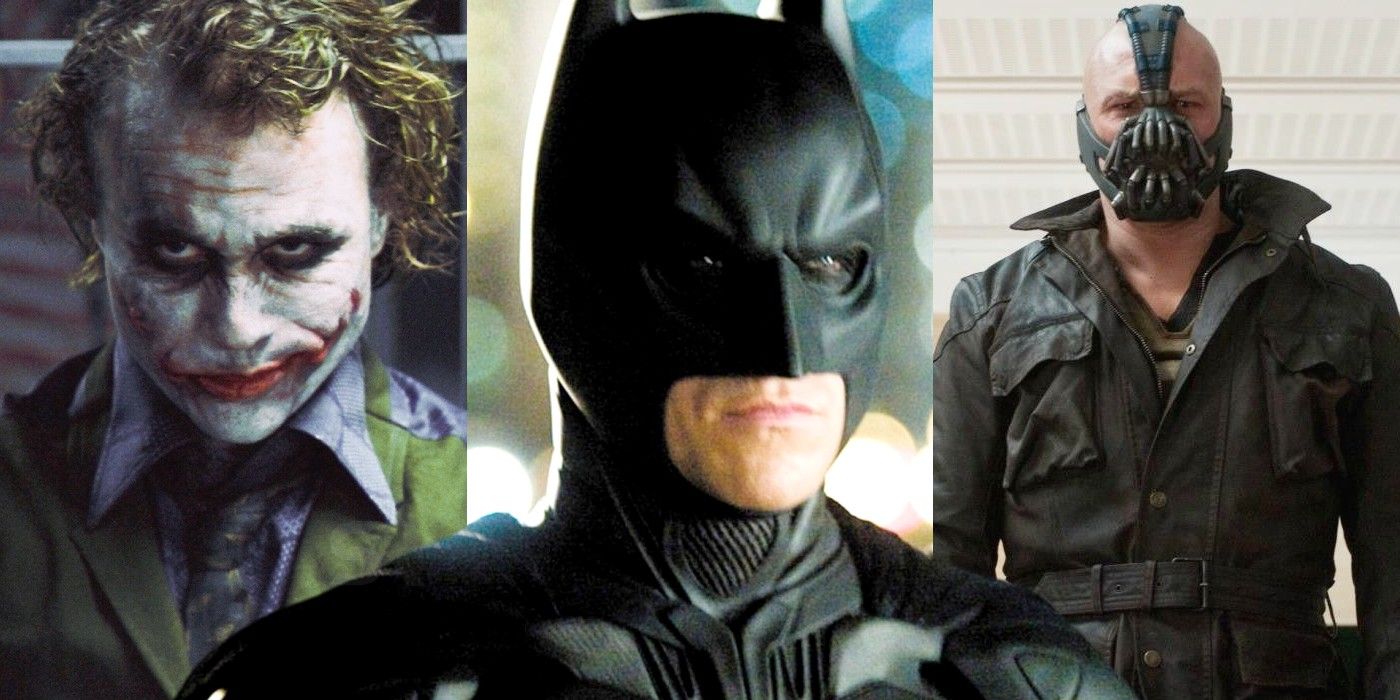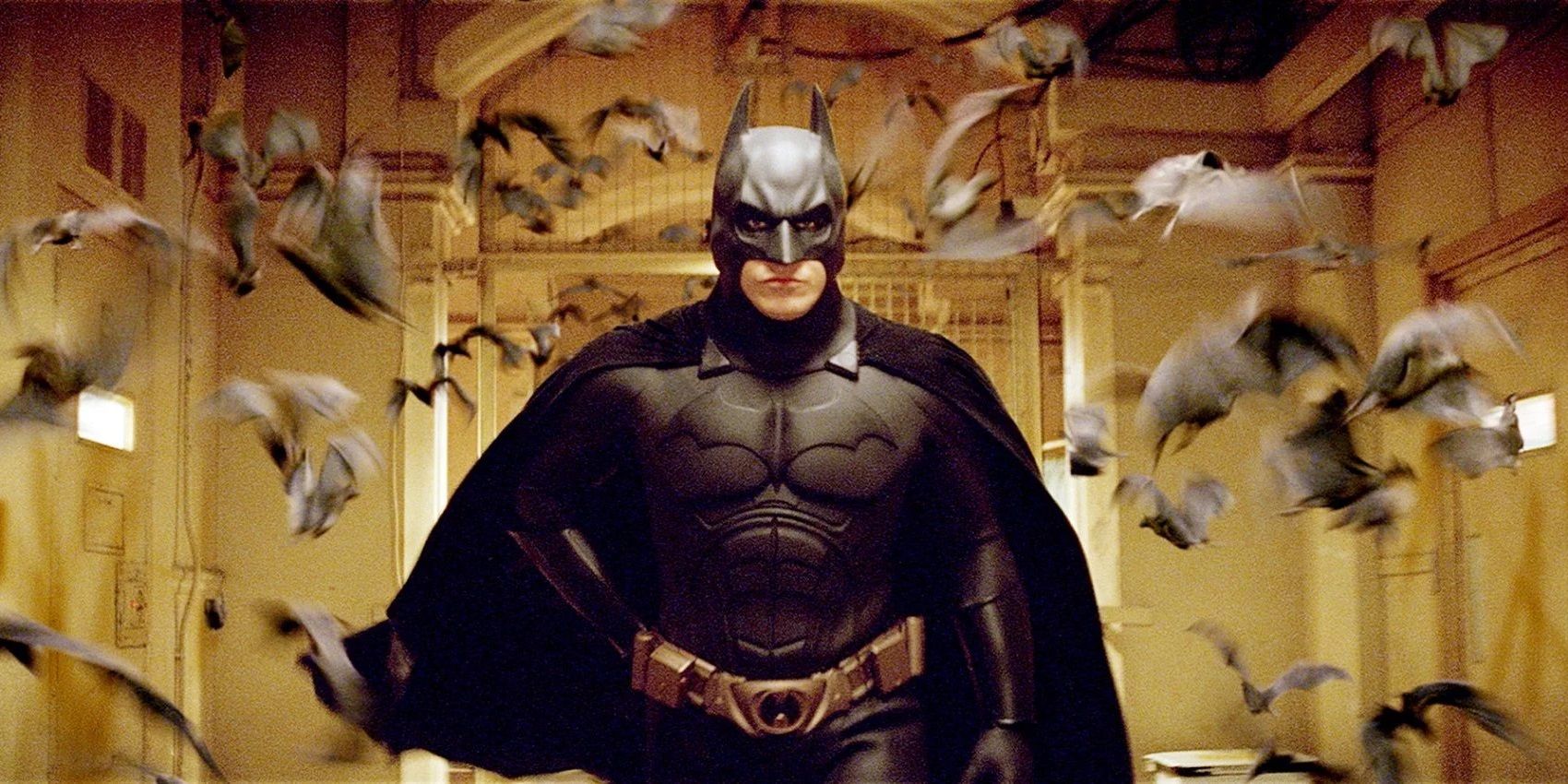Each movie in Christopher Nolan’s Dark Knight trilogy represents a different theme through its villains and Bruce Wayne’s journey, and here’s what each one’s theme is. Batman has an interesting history on the big screen, which began in the 1940s with two serial movies and in 1966 welcomed the feature adaptation of the TV series led by Adam West and Burt Ward. However, it wasn’t until 1989 when Batman’s popularity on the big screen truly began, with Tim Burton’s movie simply titled Batman, followed by Batman Returns in 1992.
Batman’s time on the big screen went through a rough patch in 1995 with Joel Schumacher’s Batman Forever and in 1997 with Batman & Robin, but it regained its popularity in 2005 with Christopher Nolan’s Batman Begins, the first entry in his Dark Knight trilogy. Nolan’s vision was more realistic and dark than the previous ones, which gave Bruce Wayne (now played by Christian Bale) and company some freshness but without losing the essence of the Caped Crusader. The sequel, The Dark Knight, is now considered one of the best superhero movies ever, and while the closing chapter in the trilogy, The Dark Knight Rises, wasn’t what fans were expecting, the trilogy as a whole has a special place in the hearts of Batman fans.
Each movie in the Dark Knight trilogy had different villains, with Jonathan Crane/ Scarecrow (Cillian Murphy) being the only one who appeared in all movies, but they also have different themes at their core. First off is Batman Begins, which tells the origin story of Batman, with Crane and Ra’s al Ghul (Liam Neeson) as main villains. The central theme here is fear, with Bruce overcoming different fears following the murder of his parents and during his training with the League of Shadows, and it’s also seen clearer with Crane, who used a fear-inducing hallucinogen to drive people mad, as he did with Carmine Falcone (Tom Wilkinson). Bruce also used fear to his benefit when building his Batman persona, as the only way he could confront the crime and decay of Gotham City was by inducing fear in his enemies through his suit, weapons, and more.
Next is The Dark Knight, which had the Joker (Heath Ledger) as the main villain and saw Harvey Dent’s (Aaron Eckhart) transformation into Two-Face. In it, Batman, James Gordon (Gary Oldman), and Dent formed an alliance to dismantle organized crime, but the arrival of the Joker changed all their plans and challenged them in ways they could have never expected. The Dark Knight, then, deals with chaos, with the Joker being the embodiment of it and literally bringing major chaos to Gotham City (and Bruce’s life, with Rachel Dawes’ murder). Batman and the Joker are opposites, with one looking to bring order while the other just wants to watch the world burn, resulting in chaos in Gotham’s criminal underworld, within the police, the government, etc.
Last but not least is The Dark Knight Rises, which had Bane (Tom Hardy) and Miranda Tate/Talia al Ghul (Marion Cotillard) as the main villains, with Selina Kyle/Catwoman (Anne Hathaway) joining the bad guys’ side for a while. Set eight years after the events of The Dark Knight, the movie saw Bruce resuming his role as Batman to save Gotham from nuclear destruction. The Dark Knight Rises deals with the theme of pain, seen with Bruce’s personal struggles which end up affecting his return as Batman, and the backstories of Bane and Talia. Other fans have suggested the theme of The Dark Knight Rises is actually heroism, as it sees the fall and rise (with some struggles on the way, of course) of Bruce Wayne and Batman, but there’s no reason to not take both pain and heroism as the themes of the movie. The Dark Knight trilogy is more than just superhero movies for the audience, as they gave more depth to the stories of one of the most popular and beloved superheroes ever.


